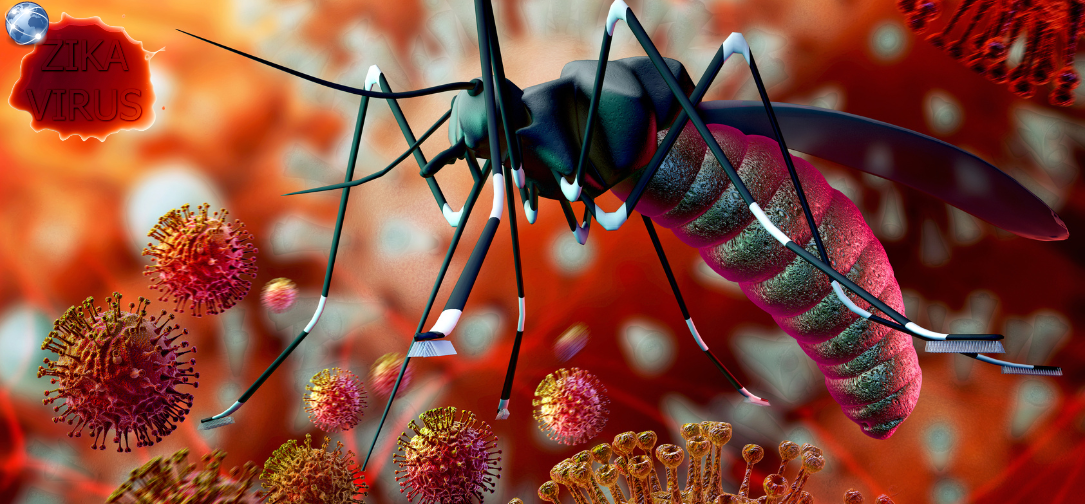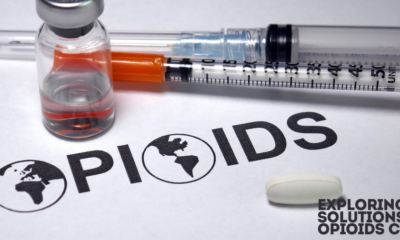Public Safety
Zika Virus: Protecting Yourself and Your Family

In the vast and intricate world of infectious diseases, certain viruses stand out due to their widespread impact, unique mode of transmission, and the potential severity of their health consequences. One such virus is the Zika virus. While relatively obscure prior to the 21st century, Zika garnered global attention when an outbreak in 2015-2016 revealed its potential to cause severe neurological disorders, particularly in unborn children. Today, protecting oneself and one’s family from the Zika virus remains a crucial public health priority in regions where the virus is active. This article provides a detailed examination of the Zika virus, its transmission, symptoms, health risks, and, most importantly, how individuals can protect themselves and their loved ones.
The Zika Virus: A Brief History and Overview
The Zika virus belongs to the flavivirus family, which also includes dengue, yellow fever, and West Nile virus. It was first discovered in 1947 in a rhesus monkey in the Zika Forest of Uganda, hence its name. However, for decades, Zika remained relatively obscure, causing only sporadic outbreaks in Africa and Asia, with mild symptoms that often went unnoticed.
It wasn’t until 2007 that the first major outbreak occurred on the Pacific island of Yap. Subsequent outbreaks followed this in other parts of the Pacific and Brazil in 2015, which marked the beginning of the most significant and concerning virus spread. The 2015 outbreak revealed new aspects of the virus, including its link to microcephaly (a birth defect where babies are born with small heads and underdeveloped brains) and Guillain-Barré syndrome (a condition where the immune system attacks the nerves).
Transmission of Zika Virus
One of the reasons Zika became such a serious public health concern is its multiple modes of transmission. The virus primarily spreads through the bite of infected Aedes mosquitoes, which are also responsible for transmitting dengue and chikungunya. These mosquitoes are primarily active during the day, especially during early morning and late afternoon, making them harder to avoid than mosquitoes that bite at night.
However, mosquito bites aren’t the only way the Zika virus spreads. It can also be transmitted through:
1) Sexual Contact: Zika can be passed from one person to another through sexual activity. This mode of transmission is unique for viruses like Zika and has serious implications for pregnant women and those trying to conceive.
2) Blood Transfusion: Although rare, there have been documented cases of Zika being transmitted through blood transfusions. This has led to stringent screening procedures for blood donations in regions where the virus is active.
3) Mother-to-Child Transmission: A pregnant woman infected with Zika can pass the virus to her baby, either during pregnancy or around the time of birth. This vertical transmission has been associated with severe birth defects, most notably microcephaly.
Symptoms of Zika Virus Infection
For many people, Zika virus infection can be asymptomatic, meaning they won’t display any noticeable symptoms. This is particularly concerning as asymptomatic individuals can still spread the virus, especially through mosquito bites or sexual contact. When symptoms do appear, they tend to be mild and can be mistaken for other illnesses, such as the flu or dengue fever. The most common symptoms include:
Fever: A low-grade fever is one of the earliest signs of Zika infection.
Rash: A red, itchy rash, often starting on the face and spreading to the rest of the body.
Joint Pain: Particularly in the hands, feet, and knees.
Conjunctivitis (red eyes): A non-purulent eye inflammation that usually doesn’t produce discharge.
Muscle Pain: Generalized aches and pains in the muscles.
Headache: Persistent headaches are also a common symptom.
Symptoms typically last for a few days to a week and are rarely severe enough to require hospitalization. However, the mildness of symptoms doesn’t diminish the potential long-term health risks associated with the virus, especially for pregnant women and their babies.
Health Risks Associated with Zika Virus
The true danger of Zika lies not in the severity of its immediate symptoms but in its potential to cause severe health complications, particularly in vulnerable populations.
1) Microcephaly and Birth Defects: The most significant concern associated with Zika virus infection is its impact on pregnant women and their unborn children. When a pregnant woman contracts Zika, especially during the first trimester, the virus can cross the placental barrier and infect the developing fetus. This can result in a range of severe congenital disabilities, most notably microcephaly, where the baby is born with an abnormally small head and brain. Babies with microcephaly often experience developmental delays, intellectual disabilities, and other neurological problems.
2) Guillain-Barré Syndrome: In rare cases, Zika virus infection can lead to Guillain-Barré syndrome, a condition in which the immune system attacks the peripheral nerves. This can cause muscle weakness, paralysis, and in severe cases, life-threatening complications such as respiratory failure. While Guillain-Barré syndrome can be triggered by other infections, the link between Zika and this syndrome has been well-documented during outbreaks.
3) Neurological and Autoimmune Disorders: Besides microcephaly and Guillain-Barré syndrome, there is growing evidence that Zika may be linked to other neurological and autoimmune disorders. Research is ongoing to fully understand the long-term health consequences of Zika infection, particularly in children exposed to the virus in utero.
Global Spread of Zika Virus
Before 2007, Zika virus was primarily confined to regions in Africa and Asia, with little known about its impact on human health. However, the outbreak in Yap Island in 2007 marked the beginning of the virus’s global spread. The most significant outbreak occurred in 2015-2016, primarily affecting South and Central America, particularly Brazil.
During this outbreak, Zika quickly spread to other parts of the world, including the United States, where local transmission was reported in Florida and Texas. The virus has since been detected in over 80 countries, with the World Health Organization declaring Zika a Public Health Emergency of International Concern in 2016.
The rapid spread of Zika can be attributed to several factors:
1) Global Travel: Increased travel between countries allowed infected individuals to carry the virus to new regions, where local mosquito populations could then transmit it to others.
2) Urbanization: The spread of urban environments, especially in tropical and subtropical regions, has created ideal breeding grounds for Aedes mosquitoes, which thrive in densely populated areas with stagnant water sources.
3) Climate Change: Warmer global temperatures have expanded the geographic range of Aedes mosquitoes, allowing them to survive and breed in regions previously too cold for them.
Preventing Zika Virus: Protecting Yourself and Your Family
Given the potential health risks associated with Zika, particularly for pregnant women, preventing infection is critical. Here are the most effective strategies for protecting yourself and your family from the virus:
1) Preventing Mosquito Bites
Since the primary mode of transmission for Zika is through mosquito bites, reducing exposure to mosquitoes is the most effective way to prevent infection.
Use Insect Repellent: Apply insect repellents containing DEET, picaridin, IR3535, or oil of lemon eucalyptus. These repellents are safe for pregnant women and children when used according to the instructions. Reapply as necessary, particularly after sweating or swimming.
Wear Protective Clothing: When outdoors, wear long-sleeved shirts, long pants, socks, and closed shoes. Light-colored clothing can help reduce the attraction of mosquitoes.
Use Mosquito Nets: Sleeping under mosquito nets is particularly important in areas where Zika is endemic. This is especially crucial for babies and young children who cannot use insect repellent.
Install Window Screens: Ensure that windows and doors are fitted with screens to prevent mosquitoes from entering your home. If screens aren’t available, keep windows and doors closed, especially during peak mosquito activity.
Remove Standing Water: Mosquitoes breed in stagnant water, so it’s essential to eliminate any potential breeding sites around your home. Empty containers that collect rainwater, such as flowerpots, buckets, and tires. Regularly clean birdbaths, pet bowls, and other water-holding items.
Use Air Conditioning: Mosquitoes are less likely to thrive in cooler, drier environments. Using air conditioning in your home can reduce the risk of mosquito bites.
2) Travel Precautions
For individuals living in or traveling to areas with active Zika transmission, specific precautions are necessary.
Stay Informed: Before traveling, check for any Zika virus warnings or advisories from health organizations such as the Centers for Disease Control and Prevention (CDC) or the World Health Organization (WHO). This information can guide travel plans, particularly for pregnant women.
Delay Pregnancy: Pregnant women or those trying to conceive should consider postponing travel to areas where Zika is active. If travel is unavoidable, it is vital to take all preventive measures to avoid mosquito bites.
Post-Travel Monitoring: If you’ve traveled to a region with active Zika transmission, monitor your health for any symptoms of Zika for at least two weeks after returning. Pregnant women who have traveled to Zika-affected areas should inform their healthcare provider and undergo testing.
3) Sexual Transmission Prevention
Because Zika can be transmitted through sexual contact, individuals should take precautions to prevent its spread.
Use Condoms: Using condoms consistently and correctly during vaginal, anal, and oral sex can reduce the risk of Zika transmission. This is particularly important if one partner has traveled to or lives in an area with active Zika transmission.
Delay Conception: If either partner has been exposed to Zika, it’s recommended to wait before attempting to conceive. The CDC suggests waiting at least eight weeks after possible exposure for women and six months for men, as the virus can remain in semen longer than in blood.
4) Blood Donation Precautions
In areas where Zika is endemic, blood donations are rigorously screened for the virus. If you’ve traveled to a Zika-affected region, it’s essential to follow local guidelines about blood donation, which may require a waiting period to ensure the virus is not transmitted through transfusions.
Treatment for Zika Virus
Currently, there is no specific antiviral treatment for Zika virus infection. Management focuses on relieving symptoms, as the body typically clears the virus on its own within a week. The following supportive treatments can help alleviate symptoms:
Rest: Getting plenty of rest is crucial for allowing the body to recover from the infection.
Hydration: Drinking fluids helps prevent dehydration, particularly if you have a fever.
Pain Relief: Over-the-counter medications like acetaminophen (Tylenol) can help reduce fever and relieve joint and muscle pain. Aspirin and nonsteroidal anti-inflammatory drugs (NSAIDs), such as ibuprofen, should be avoided until dengue infection is ruled out, as these can increase the risk of bleeding.
Conclusion
The Zika virus is a formidable public health challenge, particularly for pregnant women and their families. While the symptoms of Zika infection are generally mild, the virus’s potential to cause severe birth defects and neurological disorders underscores the importance of prevention and vigilance. Protecting yourself and your family from Zika requires a multi-faceted approach, including preventing mosquito bites, practicing safe sex, and staying informed about potential risks.
By following these guidelines and taking the necessary precautions, individuals can significantly reduce their risk of Zika infection and contribute to the broader effort to control the spread of this virus. As global health organizations continue to monitor and research Zika, ongoing public awareness and individual responsibility will remain essential in the fight against this complex and potentially devastating disease.
-

 Business7 days ago
Business7 days agoDow Futures Surge as Trump Postpones EU Tariffs
-

 Stock Market5 days ago
Stock Market5 days agoUS Stocks Soar as Court Blocks Trump Tariffs and Nvidia Delivers Strong Earnings
-

 African News7 days ago
African News7 days agoUS Imposes Sanctions on Sudan Over Chemical Weapons Allegations
-

 Government5 days ago
Government5 days agoCongress Passes Continuing Resolution, Averting Government Shutdown
-

 Press Release5 days ago
Press Release5 days agoCV5 Capital Announces Standout Performance of Cryptanium Fund I SP, Beating Industry Benchmarks
-

 Alternative Energy6 days ago
Alternative Energy6 days agoShalom Lamm on Rising Rent and the Future of Housing
-

 Government5 days ago
Government5 days agoExperts Warn of U.S. Slide Towards Authoritarianism Under Trump Administration
-

 Business2 days ago
Business2 days agoS&P 500 Soars in Best May in Decades Amid Tariff Relief and Nvidia’s Surge





























